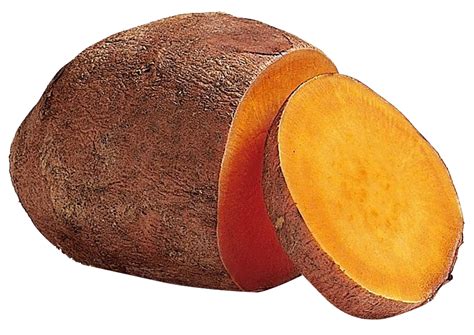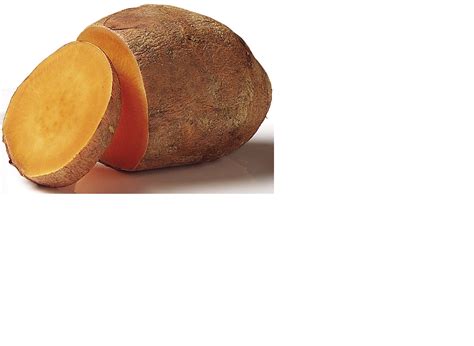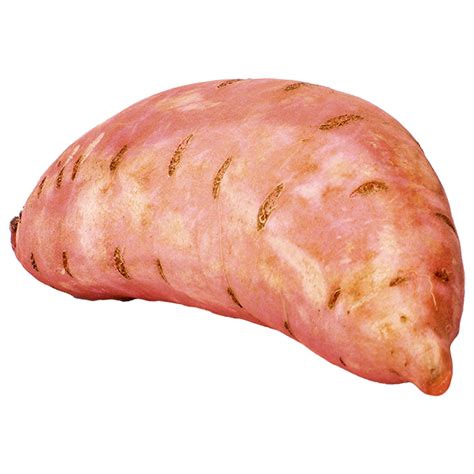If you’re a fan of sweet potatoes, it’s important to store them properly to maintain their quality. Keeping them at temperatures above 60 degrees Fahrenheit can cause them to shrivel and become dry and stringy. On the other hand, storing them at temperatures below 55 degrees Fahrenheit can lead to an off-flavor and discolored flesh. To ensure your sweet potatoes stay fresh and delicious, store them in a cool, dry place with a temperature between 55 and 60 degrees Fahrenheit.
How do you avoid stringy sweet potatoes?
When selecting sweet potatoes, it’s important to keep a few things in mind. Look for shorter, plumper sweet potatoes instead of longer, narrow ones as the latter tend to be stringy. Additionally, opt for smaller sweet potatoes rather than larger ones. If you’re unsure which variety to choose, the Beauregard is a great option.
This early variety is known for its smooth texture and is generally free of strings, making it an excellent choice for any recipe.
Which sweet potato is less stringy?
If you’re looking for a sweet potato variety that’s less stringy and perfect for purees, mashes, and baking, you might want to try Covington or Jewel sweet potatoes. These are commonly found in stores and are a great option for those who want to enjoy the sweet and nutritious benefits of sweet potatoes without the hassle of dealing with stringy textures. So next time you’re at the grocery store, keep an eye out for these varieties and give them a try in your favorite sweet potato recipes.
Are stringy sweet potatoes safe to eat?
It’s important to note that the presence of stringiness in a sweet potato doesn’t necessarily mean it’s no longer safe to consume. Rather, it’s an indication that the potato may have been stored in less-than-optimal conditions or grown in an unfavorable environment. For example, heavy rainfall or poor soil quality can contribute to the development of stringiness. While it may not affect the safety of the sweet potato, some people may find the texture unappealing.
Why do some sweet potatoes look like they have veins?
What may appear as thick, raised lines resembling veins on the surface of your sweet potato are actually fibrous roots growing on it. Despite its unusual appearance, it is safe to eat. So, don’t toss it away! These fibrous roots are a natural part of the sweet potato’s growth process and do not affect its taste or quality. Enjoy your sweet potato without any worries!
Why are my sweet potatoes long and skinny?
If you’re noticing that your sweet potatoes are growing long and thin, it could be a sign of too much nitrogen in the soil. Nitrogen-rich soil can cause roots to elongate, resulting in a less desirable shape for your sweet potatoes. To avoid this issue in the future, refrain from adding any nitrogen-rich materials like compost to your sweet potato patch. Additionally, avoid fertilizing the area to prevent excess nitrogen buildup.
By taking these steps, you can ensure that your sweet potatoes grow to their fullest potential.
How can you tell if a sweet potato has gone bad?
If you notice that your sweet potato is exhibiting any of the following signs – oozing, soft and squishy, discolored, smelly, or has a bunch of sprouts – it’s best to discard it. However, if there are only a few sprouts and the sweet potato is still firm, you can salvage it by cutting off the sprouted portion and cooking and eating it immediately. Alternatively, you can even plant it and grow your own sweet potato plant!
Can you cut off the bad part of a sweet potato?
“`Before cooking a sweet potato, it’s important to inspect it for any signs of mold or rot. If you notice any slight damage, you can salvage the rest of the potato by cutting away the affected areas. However, if the damage is severe, it’s best to discard the sweet potato altogether. In the event that the sweet potato is beyond saving, you can always compost it instead of throwing it in the trash.
“`
How long do sweet potatoes last on the counter?
“`Did you know that sweet potatoes can last up to a month at room temperature and up to three months in the fridge? However, if you want to extend their shelf life even further, freezing them is a great option.“`
What is the shelf life of fresh sweet potatoes?
The shelf life of sweet potatoes at room temperature varies depending on several factors. To ensure they last as long as possible, it’s recommended to store them in a pantry where they can last for 3-5 weeks. Alternatively, you can extend their shelf life by storing them in the fridge for 2-3 months or freezing them for even longer.
Should you refrigerate sweet potatoes?
It’s important to note that refrigerating sweet potatoes is not recommended by experts, such as the North Carolina Sweet Potato Commission. The reason being that the temperature in your fridge is too low and can alter the cell structure of the potatoes, resulting in a hard center and white spots. So, if you want to keep your sweet potatoes fresh and tasty, it’s best to store them in a cool, dry place like a pantry or cupboard.
Is it OK to leave sweet potatoes out overnight?
To ensure the longevity of cooked sweet potatoes, it is recommended to store them in the refrigerator and consume them within 5 to 7 days. According to Richard, cooked food should not be left at room temperature for more than two hours before being refrigerated or frozen. This time frame is reduced to one hour when the temperature exceeds 90°F. By following these guidelines, you can ensure that your cooked sweet potatoes remain fresh and safe for consumption.
What is the white stuff inside a bad sweet potato?
If you’ve ever sliced open a sweet potato and discovered white patches inside the orange flesh, you may have been concerned about its quality. However, there’s no need to worry as white spots in sweet potatoes are typically harmless. These spots are caused by a buildup of starch, which can occur when the potato is stored in cold temperatures. In fact, some people even prefer the taste and texture of sweet potatoes with white spots, as they tend to be drier and less sweet.
So, go ahead and use that sweet potato in your recipe without any concerns!
What is the difference between a yam and a sweet potato?
Yams and sweet potatoes are two root vegetables that are often confused with each other. Yams have a rough, brown exterior and are starchy in nature. They can grow up to 45 feet long and are commonly eaten in parts of Latin America, West Africa, the Caribbean, and Asia. On the other hand, sweet potatoes have a softer, reddish skin and a creamier, often darker interior.
They are a New World root vegetable and are widely consumed in North America, South America, and Europe. Despite their differences, both yams and sweet potatoes are nutritious and delicious additions to any meal.
Are sweet potatoes and yams the same thing?
Did you know that the beloved orange-colored root vegetable you enjoy is actually a sweetpotato? Contrary to popular belief, all vegetables referred to as “yams” are actually sweetpotatoes. Many individuals assume that the long, red-skinned sweetpotatoes are yams, but they are simply one of the numerous types of sweetpotatoes available.
What is the black stuff that comes out of sweet potatoes?
In some cases, potatoes may become damaged during the harvesting or storage process, which can lead to the growth of mold spores or bacteria. This can result in the appearance of dark or black spots on the potato, which are usually visible from the outside. However, these spots can be easily removed by cutting them away before cooking the potato.
What are the brown veins in sweet potatoes?
What is internal necrosis? It refers to the dead and dying cells found in sweet potatoes. Even scientists are still trying to figure out why this problem affects a particular variety of sweet potato. If you encounter this issue, don’t worry too much. You can still eat the rest of the sweet potato as long as you cut off the affected areas.
Why does my potato have red veins?
A: If you’ve ever noticed a pink or purple streak in your potato, it’s likely due to cold weather during the growing season. This can cause a discoloration in the flesh of the potato. However, in some cases, the streak may be caused by the potato partially reverting back to another variety that it was crossed with at some point. While this may not affect the taste or quality of the potato, it’s always a good idea to cut out any discolored areas before cooking.
What are the purple veins in potatoes?
Purple potatoes get their unique color from anthocyanins, a flavonoid pigment found in fruits and vegetables that produces shades of purple, blue, and red. This compound not only gives the potatoes their vibrant hue but also provides numerous health benefits. Studies have shown that anthocyanins have antioxidant and anti-inflammatory properties, which can help reduce the risk of chronic diseases such as heart disease, diabetes, and cancer. So not only do purple potatoes add a pop of color to your plate, but they also offer a nutritious boost to your diet.
What are the purple streaks in sweet potatoes?
Hold on, there’s an added bonus to that beautiful purple design – it’s a sign of anthocyanin. This potent antioxidant has been shown to aid in the prevention of dementia and promote overall brain health. So not only is it aesthetically pleasing, but it also has potential health benefits.
Related Article
- Why Are Some Squishmallows So Expensive?
- Why Are Some Joints Back Gouge?
- Why Are Some Follicles Empty Ivf?
- Why Are Some Basketball Rims Doubled?
- Why Are Solar Batteries So Expensive?
- Why Are Softball Teams Wearing Teal?
- Why Are Soccer Players Such Pussies?
- Why Are Soccer Players So Skinny?
- Why Are Soccer Players So Dramatic?
- Why Are Soccer Pitches Different Sizes?


